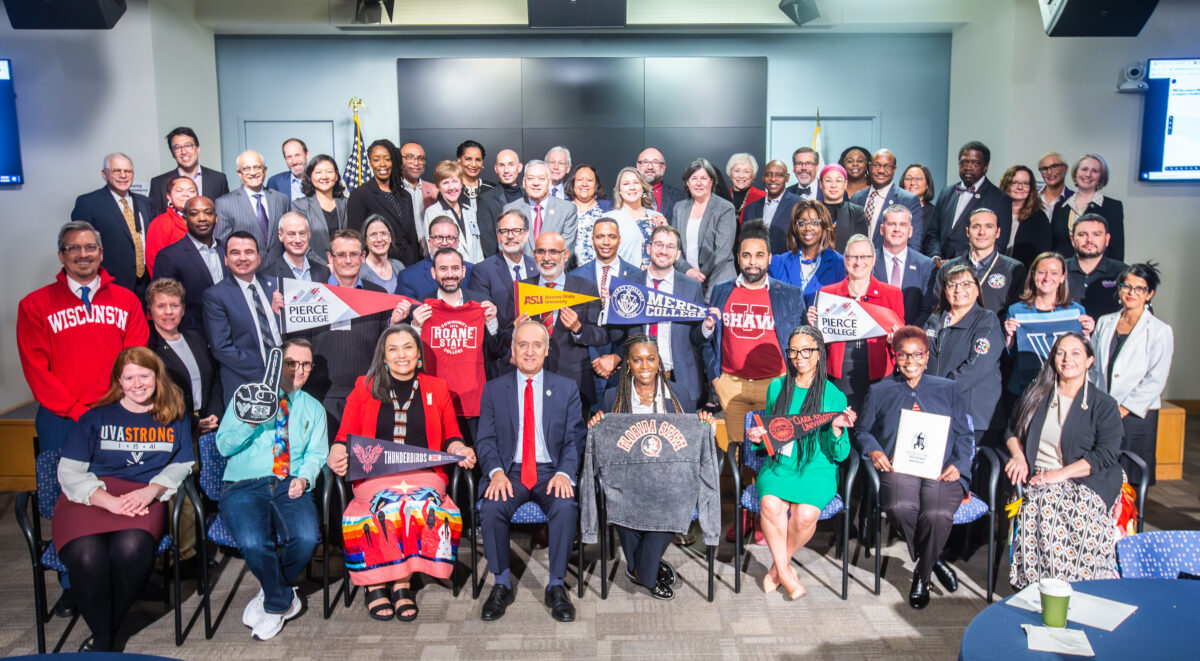New FAFSA Data Restrictions Threaten Critical Research and Practices to Support Student Success
Published Aug 13, 2024
The Free Application for Federal Student Aid, or FAFSA, has long been the cornerstone of the postsecondary financial aid system. Each year, approximately 17 million applicants fill out information about themselves, their finances and their households. This information is then used to determine students’ financial aid eligibility and award amounts. And, just as any business might study its sales data to improve product performance, improve customer service or even to forecast budgets, the U.S. Department of Education (ED), states, and colleges rely on FAFSA data to design and evaluate financial aid programs, conduct research, and provide student support services. But new legislative changes have put these practices at risk.
To improve the financial aid application process, the FAFSA was simplified through a series of legislation – namely the FUTURE Act, the FAFSA Simplification Act, and a technical corrections act (FSATCA). Unfortunately, the way those laws were written has led to new restrictions and confusion over how some FAFSA information can be used. This has significant unintended consequences for institutions, researchers, and policymakers. Left unchanged, it will hamstring stakeholders’ ability to support students, conduct research on college experiences and outcomes, and enact data-driven policies.
The new legislation changes how the FAFSA is filled out. Prior to the legislative changes, applicants shared their financial aid data, like income, with ED – sometimes by using the Internal Revenue Service (IRS) Data Retrieval Tool, which helped applicants fill out the FAFSA by pulling data from their tax returns. Under rigorous privacy protocols, colleges, states, and ED could securely access and use applicants’ financial data to understand postsecondary experiences and outcomes, as well as make those aggregated data available in public tools. This is no longer the case. In the new process, financial data from tax returns is transferred directly from the IRS to ED. Although the difference between students opting to put IRS data on their FAFSA and students permitting the IRS to transfer data directly to ED for FAFSA purposes may seem small, it triggers a legal avalanche. Certain financial information in the FAFSA is now designated as Federal Tax Information (FTI), which comes with strict usage limits.
Some of the ways in which FAFSA information has historically been utilized to inform policy and research could now be expressly prohibited while other common practices are in limbo, placing a chilling effect on critical efforts to understand and improve postsecondary experiences and outcomes. For example:
- What specific activities qualify as “the application, award, and administration of financial aid” under the FTI regulations?
- Can FTI, or metrics derived from FTI, be used to calculate aggregate statistics that inform data-driven policies and populate data tools like the National Postsecondary Student Aid Study (NPSAS), Integrated Postsecondary Education Data System (IPEDS), and the College Scorecard?
- Can FTI, or metrics derived from FTI, be used to identify students’ eligibility for programs such as TRIO and evaluate student success programs?
FAFSA applicants’ financial information is necessary for federal, state, and institutional efforts to support student access, affordability, and success. These data also help policymakers and researchers better understand who attends college, who graduates, and how students pay for their education.
For instance, Federal TRIO programs assist students from families with low incomes in accessing college. Previously, eligible students could be identified using FAFSA information. Now, this is more complicated. FTI can be used to identify students for TRIO financial aid, but not for non-monetary support services and resources. This could lead to significant disruptions in administering and managing TRIO programs and leave students without the support they are eligible to receive.
Restrictions on using FTI data will also impede vital federal, state, and institution-based research, as well as data tools that policymakers, practitioners, researchers, and other stakeholders need. Studies like NPSAS rely on financial data from the FAFSA. Other data sources, such as IPEDS and the College Scorecard, include metrics like net price and earnings disaggregated by income. These data help identify and monitor trends in higher education and post-college outcomes. Campuses, university systems, and states also use information derived from the FAFSA for their own research and program evaluation.
To help institutions and state agencies understand these new restrictions, ED should provide more, clear guidance on accessing and using FTI. On August 1, the Senate Appropriations Committee’s fiscal year 2025 funding bill expressed concern over the potential fallout from these restrictions and urged ED to maintain secure data collection, reporting, and data sharing. The Committee also directed ED to reaffirm those data uses in agency guidance to further transparency, research, and accountability, while protecting student privacy. The bipartisan bill shows that lawmakers understand what is at stake. Ultimately, legislative changes are needed to restore the allowable uses of financial data from the FAFSA while preserving important safeguards for that data.
The ability to analyze applicants’ financial data from the FAFSA is crucial for creating a higher education system that is equitable, accessible, and effective. By preserving or restoring access to this vital information, we can continue to make data-driven decisions that benefit students from all backgrounds. It is imperative that policymakers, institutions and researchers work together to find solutions that protect student privacy while maintaining the data access necessary for improving student outcomes. At IHEP, we believe data-driven policymaking serves students well. And for that, we need data.


